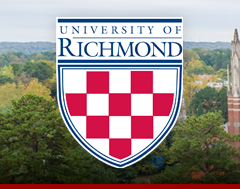Date of Award
5-2025
Document Type
Thesis
Degree Name
Bachelor of Arts
Department
History
First Advisor
Dr. Thad Williamson
Abstract
Cities are dynamic, evolving reflections of our societies. The current built environment of Richmond, Virginia, is shaped by its stored history with zoning, which is inextricably linked to race. Since 1927, the City of Richmond, Virginia has had some form of a zoning ordinance in place, intended to create a system of de facto residential segregation. While the first zoning ordinance primarily focused on separating residential and industrial spaces in response to the City Beautiful movement and early 20th-century progressive ideals, zoning in Richmond quickly became a weapon of segregation and racism. As the former capital of the Confederacy, Richmond is no stranger to systemic racism; however, decades of explicit and then eventually implicit racist zoning ordinances and city plans cemented this legacy into the built environment. For decades, Richmond’s zoning ordinances systematically hurt Black and poor neighborhoods in favor of whiter, wealthier suburbs. Today, residents of Richmond’s historically Black neighborhoods have higher rates of poverty, experience more disparate impacts of climate change, have worse educational outcomes, and have worse physical health. Research has found that amending zoning ordinances to allow for denser communities by removing protections for single-family zoning can reduce these disparities while simultaneously stimulating new housing growth and new economic opportunities. In response to ideals expressed in the 2020 Richmond 300 Master Plan, Richmond should rewrite its zoning ordinance to allow for denser, more mixed-use, walkable neighborhoods and communities to alleviate the lasting effects of legal, systemic racism built into everyday life in the City.
Recommended Citation
Ellis, Jacob, "Reversing Residential Segregation in Richmond: Recommendations for a More Inclusive Future" (2025). Honors Theses. 1816.
https://scholarship.richmond.edu/honors-theses/1816
